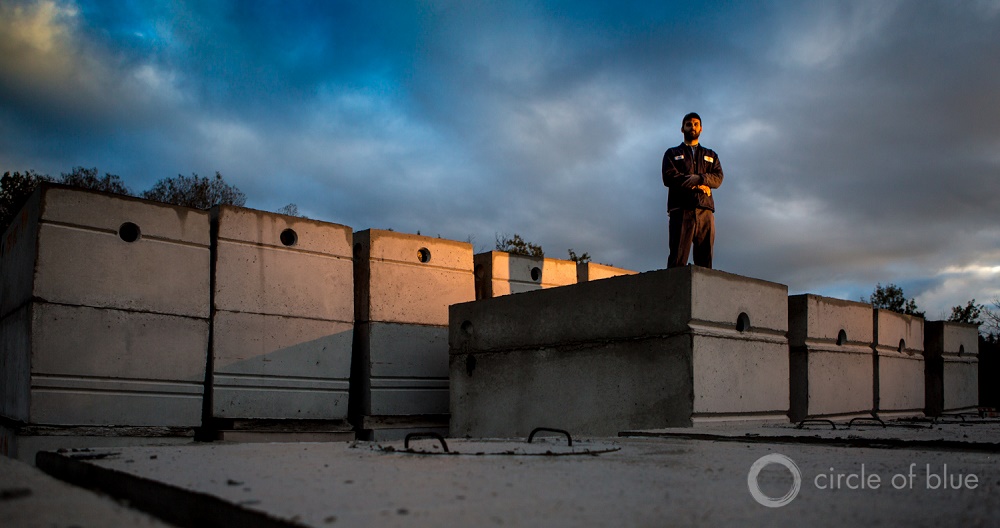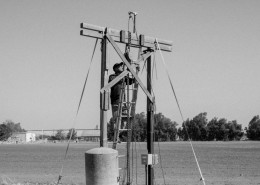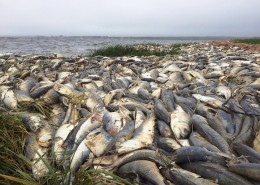September 7, 2016
Series on America’s “under-the-radar” septic infrastructure wins first place for “outstanding explanatory reporting.”
TRAVERSE CITY, MI – During his seven years as Circle of Blue’s west coast correspondent Brett Walton’s reporting has displayed a mastery of complex subjects, and a rare alliance of tenacious fact-gathering and keen writing.
This week the Society of Environmental Journalists recognized Brett’s skills with the first place award for “outstanding explanatory reporting” for his insightful 2015 series on the hidden hazards of septic treatment systems.
Presented by a group of professional peers, the award is one of the top honors in American environmental journalism. It also is the second time in two years that Brett’s work has attracted an SEJ honor. In 2014, SEJ awarded Brett third place for “outstanding beat reporting” for five articles encompassing drug disposal in California, water scarcity in the Colorado River Basin, water pricing in 30 American cities, drought in Texas, and disinvestment in water infrastructure.
“Brett is, flat out, a superb journalist,” said J. Carl Ganter, the co-founder and director of Circle of Blue. “His gift is to weave new facts and telling details into riveting stories about uncommon subjects. Brett reports from the places where new thinking converges with old water management practices. He is helping the country understand the urgency and consequences of water stress in the United States. We thank SEJ for recognizing Brett’s terrific work.”
Brett’s five-part “Septic Infrastructure in the U.S.” series, published late last year, reported on how “because of neglect, age, or ignorance of hydrological conditions, failing septic systems, entirely hidden from public view, are producing a public health and ecological mess.” Brett’s reporting from across the nation found that problems come from all directions. Hormones and pharmaceutical compounds are found in the groundwater near septic systems in New York and New England. Parasitic diseases in rural Alabama are developing because of poor sanitation and septic system failure. Ohio health authorities estimate that nearly one out of every three septic systems is failing.
“From New England to the Deep South and particularly in poor regions or areas with a dense clustering of septic systems near rivers or lakes, treating wastes with underground tanks and drain fields is emerging as another ruinous, and largely unaddressed, national water pollution challenge,” Brett reported.
The SEJ competition judges commended Brett for his keen approach to what they called an “ under-the-radar threat to public health.” The judges added: “Brett Walton reports how these aging systems are an overlooked source of water pollution and disease transmission — such as fecal bacteria, norovirus, cryptosporidium and hookworm. Each story in Walton’s five-part series stood solidly on its own, with elegant writing and clear explanations.”
Brett Walton is a Seattle-based reporter for Circle of Blue. He writes the Federal Water Tap, a weekly breakdown of U.S. policy. Interests: Southwest, Pacific Northwest, Pricing, Infrastructure.
Septic Infrastructure in the U.S.
Circle of Blue’s senior editor and chief correspondent based in Traverse City, Michigan. He has reported on the contest for energy, food, and water in the era of climate change from six continents. Contact
Keith Schneider











